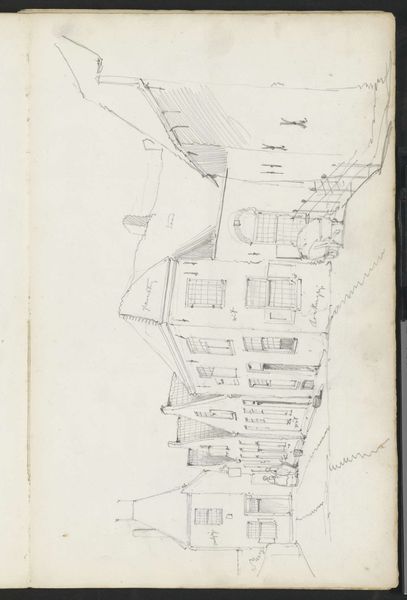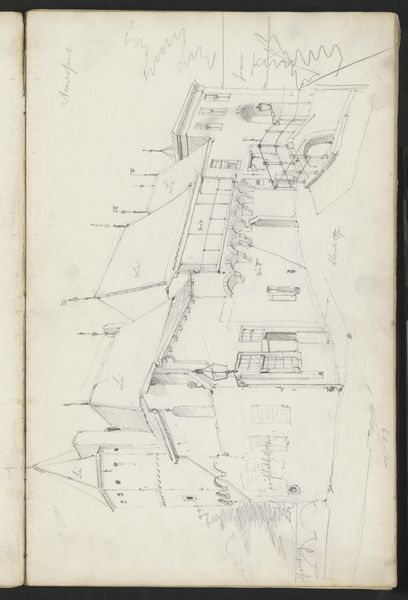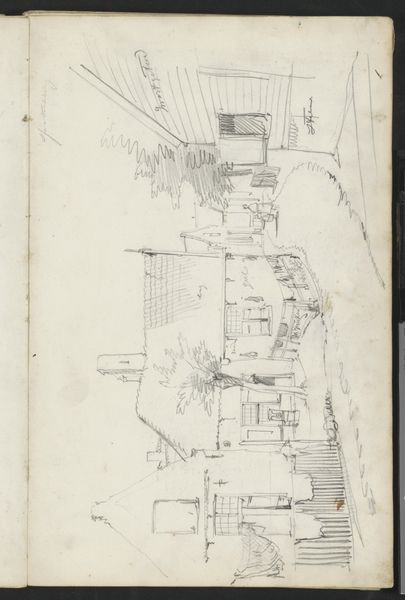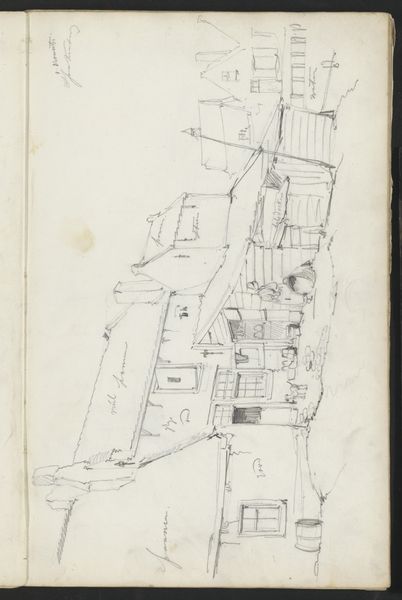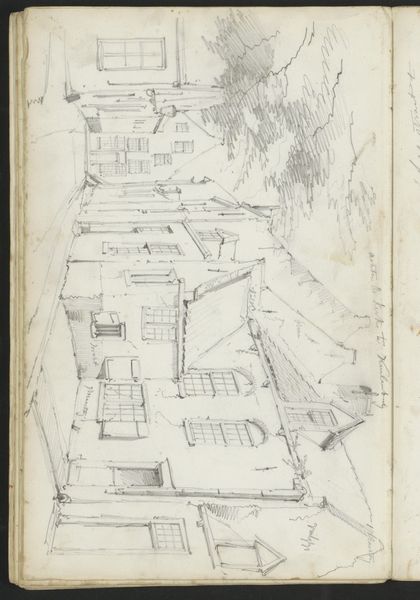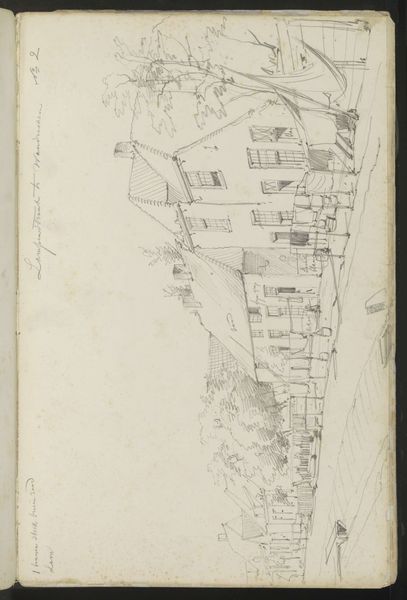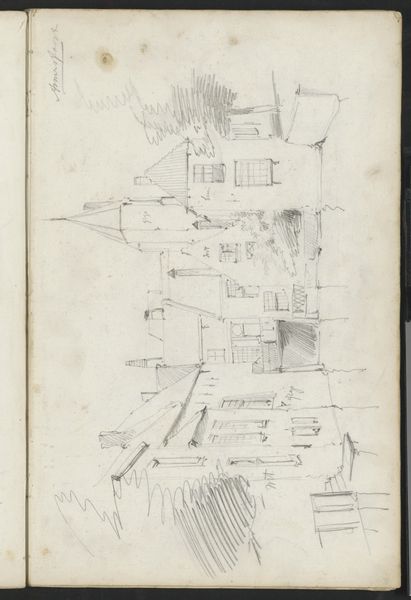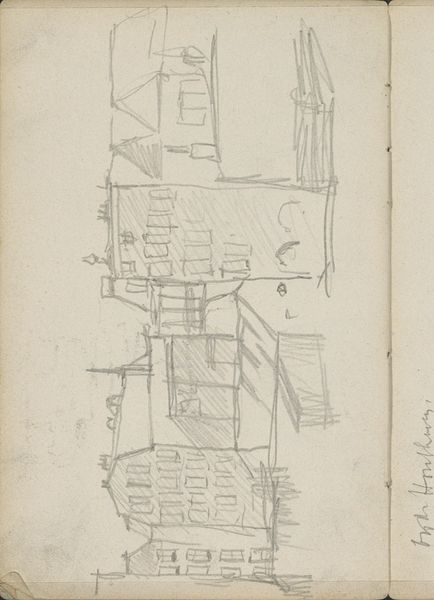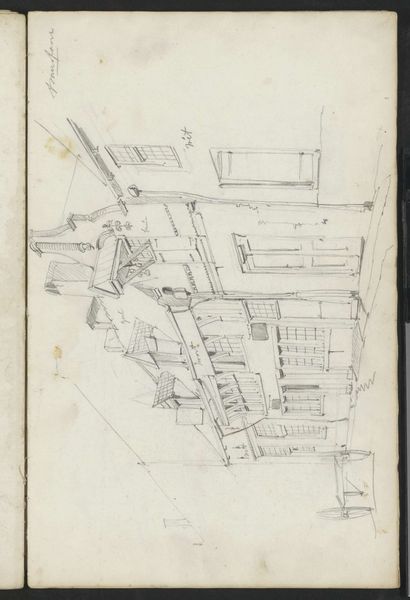
drawing, pencil
#
drawing
#
quirky sketch
#
dutch-golden-age
#
pen sketch
#
sketch book
#
landscape
#
personal sketchbook
#
sketchwork
#
pen-ink sketch
#
pencil
#
pen work
#
sketchbook drawing
#
storyboard and sketchbook work
#
sketchbook art
#
realism
Copyright: Rijks Museum: Open Domain
Curator: Here we have Willem Koekkoek's "Arbeiderswoningen te Spakenburg," dating from between 1849 and 1895. It’s currently held in the Rijksmuseum. Editor: It strikes me as very raw and immediate—almost like a fleeting impression captured in a sketchbook. The rapid pencil strokes suggest movement and energy. Curator: It’s a quick sketch, but reveals much about labor and living conditions in Spakenburg. Koekkoek was known for romanticising cityscapes, but there’s also a strong current of social realism present. Think about who these workers are and the context of industrialisation in the Netherlands at the time. Editor: Absolutely. And you can see that translated through his tools. It's executed in pencil and pen, probably en plein air. You get a sense of the architecture's physicality – the wood, the plaster, the closeness of the buildings. It speaks of a constrained existence, where the means of production and the materials available dictate the built environment. It really speaks to how space shapes labor and lives. Curator: The composition, from a slightly elevated vantage point, implies a social hierarchy too. Koekkoek is observing, and therefore detached, from the realities lived within these homes. Also consider that this was a time when artistic depictions of laborers often served a specific political purpose. The art becomes a record, and also an interpretation. Editor: Right, there’s a delicate dance here. He documents the textures of daily existence but remember, these spaces aren't pristine; labor is messy. Where is that mess depicted, really? Is Koekkoek perhaps sanding off the edges in his medium, cleaning up reality for a different viewership, consumers of this landscape sketch? Curator: Perhaps. These drawings, while seemingly casual, were circulated and consumed by an audience far removed from the lives they depicted. Editor: Indeed. These rapid sketches, with their implications of both capturing life but also potentially sanitising it, highlight just how materials and production shape not just the art object, but its interpretation. Curator: Precisely. The intersection of art and societal issues continues to challenge us. It's through critical investigation that we become attuned to the multifaceted narratives interwoven into artworks such as Koekkoek's sketch. Editor: And recognising that tension allows for a more informed consumption, and a deeper appreciation of not just the finished product, but all the socio-economic factors etched within the very material of its creation.
Comments
No comments
Be the first to comment and join the conversation on the ultimate creative platform.


